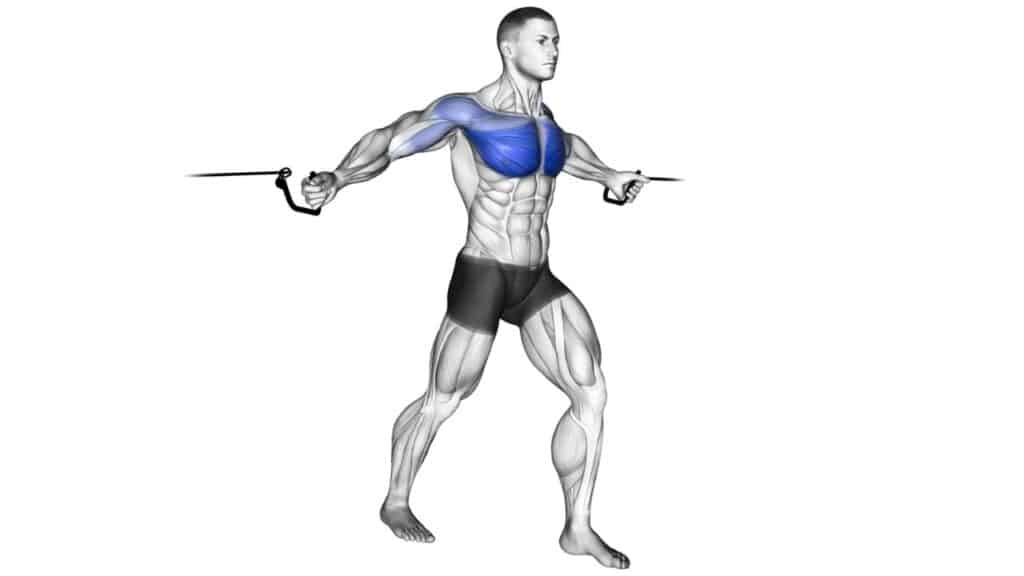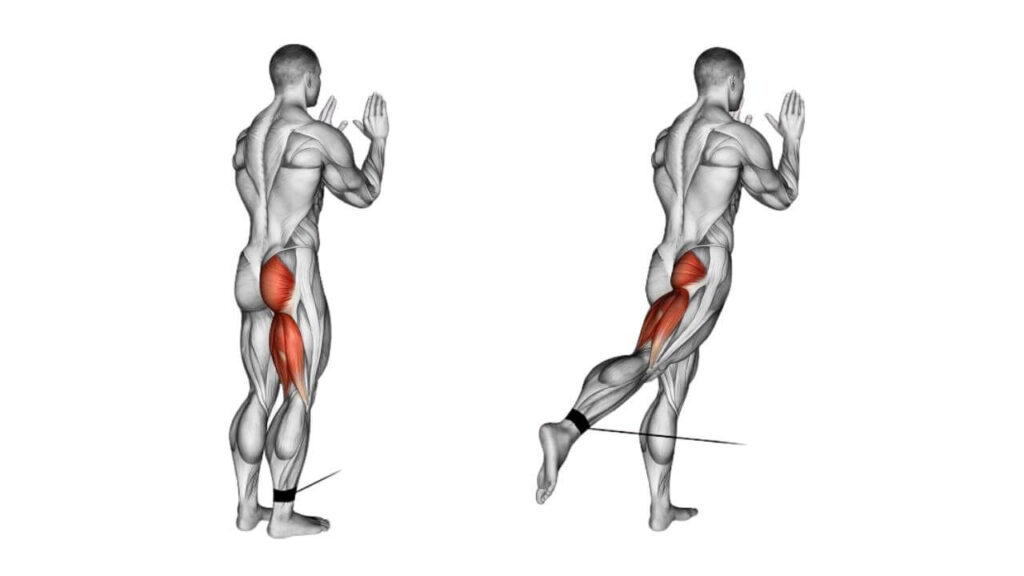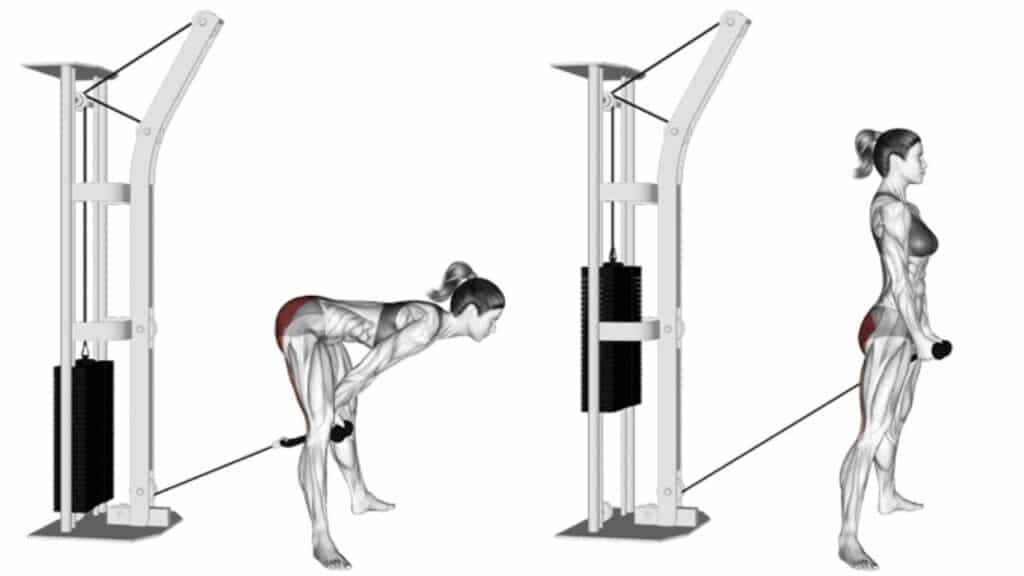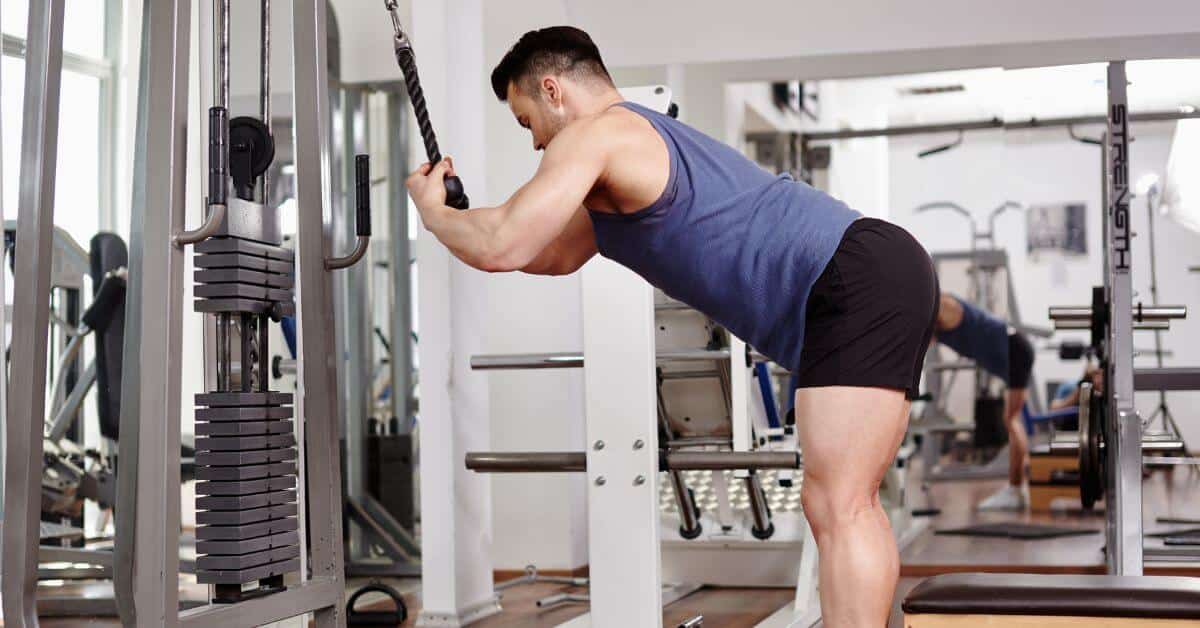If you have ever been to a gym, you may be familiar with the cable machine. This helpful exercise machine, also known as a pulley machine, is a standard in most gyms and athletic training facilities. First, a brief reminder of what they are.
Table of Contents
ToggleThere are adjustable cable pulleys on a piece of large gym equipment called the cable machine.
Due to the cable’s resistance, you may perform various exercises in several directions. While other devices have several, some have one or two cable stations.
Are Cable Machines Effective?
Cable machines are effective for working out your muscles in a controlled way because the machine requires you to move in a certain way. The cable machine is an excellent functional fitness equipment that provides continual resistance for all strength training exercises.
Start Building Your Dream Body Today
Ready to elevate your fitness game without falling into the trap of dull, repetitive routines that just don’t deliver? Imagine sculpting your ideal physique and boosting your health, all while still enjoying life’s pleasures, like those irresistible weekend getaways and your aunt’s legendary cheesecake. With our online fitness and nutrition coaching service, you don’t have to compromise. Dive into a personalized fitness journey that blends perfectly with your lifestyle, not against it. Book your completely free discovery consultation today, and take the first step towards a transformation that doesn’t require giving up the joys of life.

“I was skeptical about online fitness coaching, but Functional Body Savage completely changed my perspective. Vanja and Radomir’s personalized approach and attention to detail have helped me achieve goals I never thought possible. I’m stronger, more confident, and grateful for their guidance.”
Emily Thompson, San Francisco, CA
Learn More About Our Online Coaching ServiceQuick Summary
- The most versatile pieces of gym equipment are cable machines.
- Cable machine movements involve fewer muscle areas than free-weight exercises do.
- Most gyms and facilities for athletic weight training have cable machines.
Cable Machine Benefits
Using cable-based machines instead of seated single-muscle weight machines has numerous benefits. Continue reading to discover the many advantages of cable machines.
Constant Tension
During an exercise, cable machines push your muscles to contract throughout their range of motion. So whether you are stretching the muscle, shortening the muscle, or pausing between reps, your muscles are working as long as you don’t let the weight stack fall.
Due to the constant strain cable machines produce, the strengthening of muscle fibers occurs. On the other hand, dumbbells and barbells rely on gravity to create resistance.
You eventually arrive at a moment of rest where your muscles are not needed to contract. Imagine yourself at the bottom of a biceps curl with your arm fully extended.
Consider reading:
Versatility
With their numerous attachments and weight increments, versatile cable machines make it simple to mix up your exercises and resistance level.
For biceps curls, the weight origin may be at the bottom of the machine, and it could then be raised to a higher position to allow triceps extensions.
And if the weight is not light or heavy enough, you may quickly decrease or increase it by moving the pin in the stack. A benefit of using cables in a crowded gym is that you can do a full-body workout only using one machine.
Beginner-Friendly
For experienced weightlifters, this may not be a significant advantage, but beginners must consider this. You put a lot of effort into perfecting the proper form of your exercises when using free weights.
With workouts like bench presses, deadlifts, squats, and lunges, you end up tilting, stumbling, or fumbling since you are not yet accustomed to supporting the loaded barbells or dumbbells in various positions.
However, there is no direct load on your entire body when using the cable crossover machine; therefore, there is less weight imbalance.
Exercises with a cable machine will be simpler to master, making it easier for you to train safely immediately.
Unlike free weights, cable machines don’t require as much work from stabilizer muscles. Free weights demand a substantial effort from stabilizer muscles and activation of multiple muscle groups to keep the body balanced.
Safer to Use
As opposed to free weights, cable machines are much safer. If the load is too big for you to finish a rep, nothing will stop the free weights from crashing to the ground, or worse, you.
On the other side, cable machines typically have a weight stack that only points in one direction and is bolted into the floor.
In the event of a mid-rep failure, the weight stack will fall on itself as the pulley pulls the cable away from you.
This is one of the rare instances where free weights tend to be the worse option compared to cable machines.
In a sense, the downsides outweigh free weight benefits.
More Cable Machine Exercise Options
The pulley system on the cable machine allows you to perform exercises that are impossible to do with free weights.
For instance, a cable machine will enable you to perform standing, kneeling, or sitting chest presses, whereas dumbbells only will allow you to perform flat and incline bench presses.
Additionally, pressing out while standing would not work your chest muscles like a cable. As opposed to many chest-focused workouts, this is shoulder-intensive.
“You need a stable foundation to develop power, and this comes from training standing up. If you want to be able to transfer as much power as possible, you need to incorporate bands or cables as well!” – Adam Sinicki, AKA The Bioneer, author of the Functional Fitness and Beyond
Cable Machine Downsides
Like anything else, cable machines have drawbacks. Here are the top three.
Fewer Weight Options
One drawback of cable machines is that the manufacturer sets the weight increments. The weight stack may not always have manageable increments.
For instance, you might be too powerful to consider a 40-pound sitting row difficult but not strong enough to increase it to 50 pounds.
The machine might only offer those weight increments, though. You might be more successful with free weights in situations like this.
They Recruit Fewer Muscles
While cable machines allow you to perform various exercises that hit your muscles at different angles, the machine dictates your movement path.
This can help beginners avoid injuries while also removing some of the requirements for your smaller muscles to stabilize the working muscles, as they would during free weight workouts.
Therefore, compared to free weight exercises, cable machine movements engage fewer muscle groups.
They’re Less Accessible
Cable machines are less accessible than free weights because of their size. You may add one to a home gym, but doing so requires a sizable area and financial commitment.
Membership is required to use the cable machines, even though many gyms and fitness centers have one or more on the floor.
Not to add, if the hours don’t work with your schedule that week, you have to go to the gym, which can be a headache.
Cable Machine Exercises
Below are some excellent exercises you can do with a cable machine. We will provide you with a step-by-step guide to performing them.
Standing Shoulder Press

How to Perform a Standing Shoulder Press
- Stand between two handles-equipped wires that range in height from low to middle.
- Standing up with your elbows bent and in the starting position for a shoulder press, squat down, grip each handle and repeat. The handles should be just over your shoulders.
- To increase your stability, take one step backward. Push the wires upward with your core engaged until your arms are overhead.
- When the handles are level with your shoulders, reverse the motion.
- Perform 2-3 sets of 10–12 reps.
Cable Chest Fly

How to Perform a Cable Chest Fly
- Position yourself between two wires with the handles just over your shoulders.
- Take hold of a handle with each hand and advance with one foot. You should extend your arms to the sides.
- Bring the handles together until they meet in the middle by slightly bending your elbows and contracting your chest muscles.
- After pausing, move cautiously back to your starting position.
- Perform 2-3 sets of 10–12 reps.
Wood Chop

How to Perform a Wood Chop
- Put your feet shoulder-width apart and take a side position next to the cable machine. You should adjust the pulley to its highest position.
- The cable hook should have a handle attached.
- With both hands, grasp the handle above the shoulder. You will be facing the pulley with your arms fully extended.
- While rotating your torso and hips, pull the handle down and across your body. You shall come out on the other side. Throughout, keep your abs engaged.
- After pausing, move cautiously back to your starting position.
- Perform 2-3 sets of 10–12 reps.
Glute Kickback

How to Perform a Glute Kickback
- Place the pulley on the lowest setting while facing the cable machine.
- Wrap your left ankle around the ankle attachment after attaching it to the cable hook.
- Hold the machine gently in your hands to support your upper body. Right knee slightly bent, left foot lifted off the ground, left leg extended behind you. Avoid bending down your back. Just as far as you can without losing your form, go back.
- Return to the starting position after the movement and squeeze.
- Before switching to the other leg, repeat 10 times.
- Put 10 reps in 2-3 sets on each leg.
Romanian Deadlift

How to Perform a Romanian Deadlift
- With the pulley set at the lowest position, face the cable machine while standing.
- Connect the cable hook to two handles or a rope. The shoulder width between the feet is ideal. To have enough space to bend at the hips, ensure you stand far away from the machine.
- The resistance will cause your hands to be drawn toward your feet as you slightly flex your knees and bend forward at the hips. Throughout, maintain a tight core and a straight back.
- Pause, then raise your hips to stand up.
- Perform two to three sets of 10 to 12 reps.
FAQs
Can You Build Muscle With Cable Machines?
Yes, you can build muscle with cable machines. In addition to letting you challenge your body from challenging angles to imitate with free weights or conventional machines, it is a remarkably safe method to push yourself to the limit.
Are Cables as Good as Free Weights?
Yes, cables are as good as free weights. Both are effective in their attempts to build muscle and increase strength.
Can You Build a Big Chest With Cables?
Yes, you can build a big chest with cables. An ideal substitute for the bench press for building up your chest muscles is the cable fly.
Are Cables Best for Hypertrophy?
Yes, cables are best for hypertrophy. Every lifter can benefit from the wide variety of advantages cable exercises provide. They are practical tools for maximizing training for hypertrophy and provide a joint-stabilizing alternative to conventional equipment and free weights.
Why Are Cable Exercises So Effective?
Incorporating cable exercises is an excellent method to add variation to your fitness regimen while gaining strength and working your muscles from various angles.
Cable machine exercises are ideal for strengthening since they require constant tension to lift and lower the weight stacks.
Due to their capacity to focus on various body areas, cable machines are also referred to as the most adaptable gym equipment. This is a great way to build strength.
If you believe cable machines aren’t for you, check our ultimate guide on the best functional training equipment for some alternatives.
Start Building Your Dream Body Today
Ready to elevate your fitness game without falling into the trap of dull, repetitive routines that just don’t deliver? Imagine sculpting your ideal physique and boosting your health, all while still enjoying life’s pleasures, like those irresistible weekend getaways and your aunt’s legendary cheesecake. With our online fitness and nutrition coaching service, you don’t have to compromise. Dive into a personalized fitness journey that blends perfectly with your lifestyle, not against it. Book your completely free discovery consultation today, and take the first step towards a transformation that doesn’t require giving up the joys of life.

“I was skeptical about online fitness coaching, but Functional Body Savage completely changed my perspective. Vanja and Radomir’s personalized approach and attention to detail have helped me achieve goals I never thought possible. I’m stronger, more confident, and grateful for their guidance.”
Emily Thompson, San Francisco, CA
Learn More About Our Online Coaching Service





